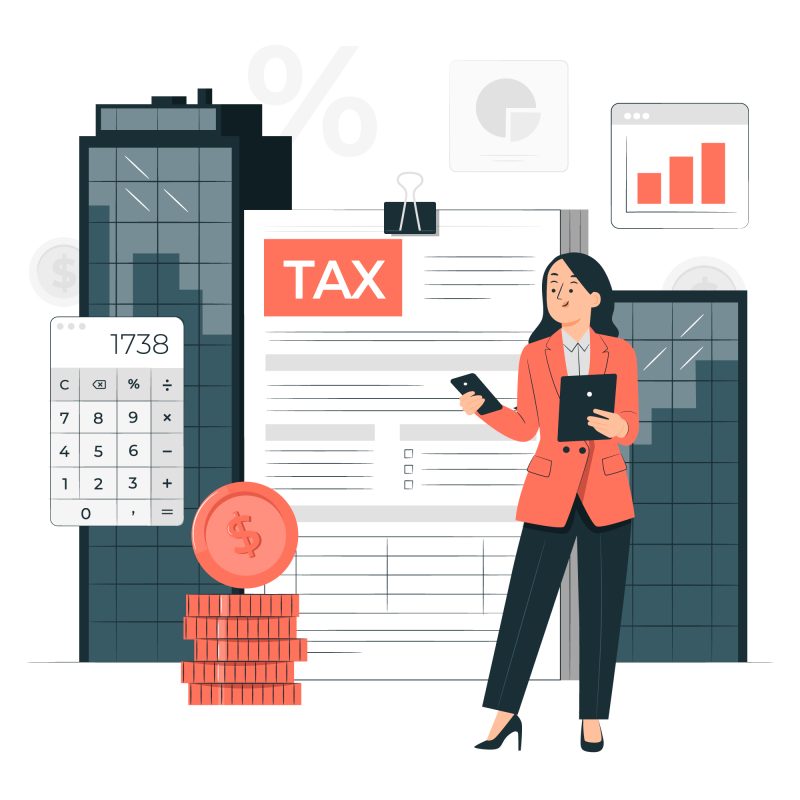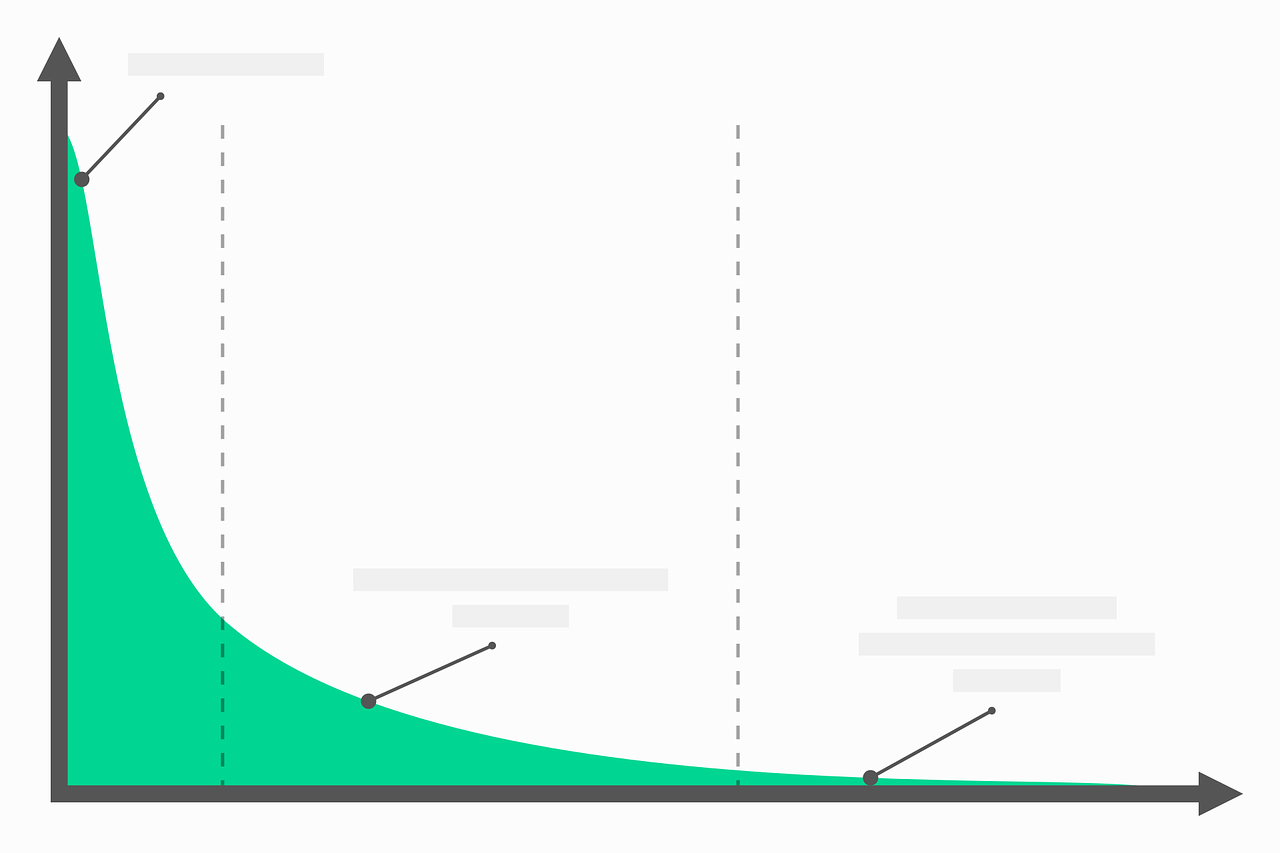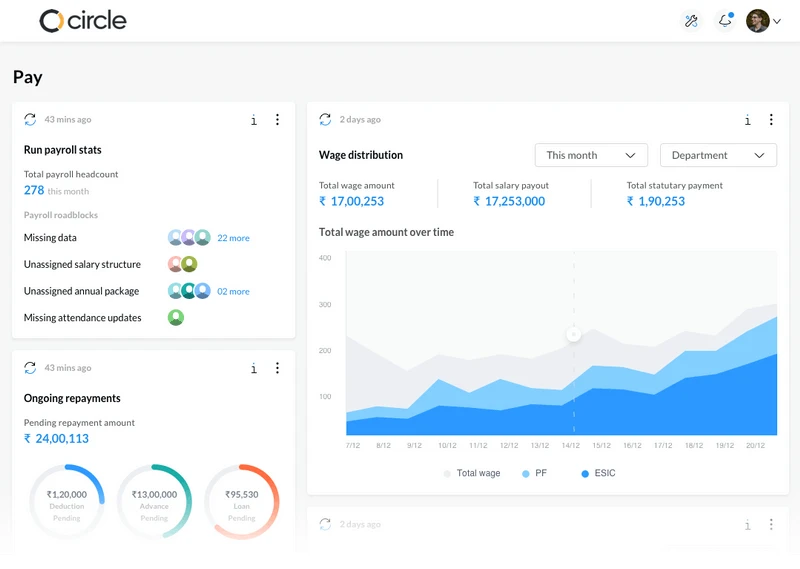What Is a Professional Tax?
A professional tax is a type of tax that various state governments in India levy on individuals engaged in some profession, trade, or occupation. This includes medical professionals, legal practitioners, teachers, accountants, etc.
The professional tax rate varies from one state to another and is usually calculated as a percentage of the gross income earned by the professional. A category slab system determines the tax amount, with different rates for different income brackets.
Professional tax deductions are allowed at the time of filing income taxes. For particular groups of people, such as blind individuals, people with physical disabilities, or disabled individuals, several states offer salary income deductions. The applicable state government sets professional tax rates and regulations. Then, the tax is often taken out of employees’ paychecks by employers and paid to the appropriate state authorities, not federal authorities.
Who Should Pay Professional Tax?
People who make a living via a profession, trade, or employment are typically responsible for paying professional taxes. Typically, this tax liability pertains to:
- Salaried Individuals: Salaried workers employed by public or private institutions must pay professional tax. Their employer withholds the tax from the salary and sends it to the state government. The key responsibility here lies with the Human Resource Management professionals.
- Self-Employed Persons: Professionals, consultants, freelancers, doctors, lawyers, chartered accountants, and other independent contractors who operate their businesses or render services are responsible for paying professional taxes.
- Business Owners: Depending on the type and size of their operations, owners of corporations, partnerships, and other organisations are typically compelled to pay professional tax.
- Working Directors: Directors of businesses that are paid a salary are subject to professional tax.
Individuals subject to professional tax must register with the proper state agency, pay the tax according to the established schedule, and abide by the rules established by their state government.
Professional Tax vs. TDS
In India, two main tax forms are applicable in revenue generation and collection: professional tax and Tax Deducted at Source (TDS).
Professional Tax: People must pay this direct tax based on their income. States have different professional tax rates and regulations. The state governments use this tax to fund the operations and services of local governments.
Tax Deducted at Source (TDS): TDS is a method of deducting income tax at the place where income is generated. It applies to various sources of income, including wages, interest, rent, fees from professionals, etc. The payer must withhold a predetermined portion of certain payments as TDS and remit it to the government.
While professional tax is paid to the state government, TDS is paid to the central government.
What Causes the Variation in Professional Tax Deductions from Salary?
Since professional tax is a state-level tax and each state in India can charge and manage it per its own rules and regulations, professional tax deductions from salaries might vary depending on several criteria. The primary reasons why professional tax deductions from salaries vary are as follows:
- State-Specific Rates: The professional tax is subject to rates each state government sets. Depending on income slabs or salary ranges, the tax rates may change. While some states might have a flat tax, others might have a progressive tax system, where the tax rate rises as income levels rise.
- Income Slabs: Different states may have distinct income slabs to determine professional tax. For instance, State A has a tax rate of 3% for a salary range of INR 25,000-50,000, while State B may have a tax rate of 4% for the same salary.
- Exemptions and Deductions: For certain groups of people, such as senior citizens, people with disabilities, or women, some states may offer exemptions or deductions. Such changes in exemptions may result in disparities in the amount of professional tax.
- Type of Profession and Job: The type of profession or job may also impact the amount of professional tax. Different states may have different tax rates for different professions. For example, Maharashtra may apply a tax rate of 4% to a lawyer’s salary, while Punjab may apply a lower tax rate of 2% for the same profession.
- Tax Collection Mechanism: Each state may have a system for collecting business taxes. Professionals and self-employed people may be required to pay the tax directly to the state authorities in some states. In contrast, other states may compel employers to deduct and collect the tax from employees’ paychecks and send it to the government.
- Fiscal Policies: Each state’s budgetary requirements and fiscal policies influence professional tax rates. States with higher income demands may levy higher tax rates to achieve their financial obligations.
- Legislative Revisions: The professional tax rates may be modified in response to state tax legislation and regulations revisions. Individual state governments may occasionally change the rates. It is one of the primary HR roles and responsibilities to keep up with the latest revisions.
Calculating the Professional Rax on Salary
Salary tax is determined using the applicable tax rates given by the state government under whose provision the salaried person works. The below-given steps are typically included in the calculation process:
- Consider Deductions: Before computing professional tax, consider standard deductions, which some jurisdictions may permit as exemptions from taxable income. These deductions can differ and may be based on age, gender, or the presence or absence of a disability. Before calculating the tax rate, deduct the standard deductions from the taxable income.
- Calculate the Taxable Income: The first basic step is to determine the salaried person’s taxable income. The gross salary is used as the starting point, and other components are subtracted, including provident fund payments, the professional tax itself (if applicable), and any other exemptions permitted by the Income Tax Act.
- Figure out the Professional Tax Slab: Each state has its tax slabs depending on various income levels. Find out which tax bracket the taxable income belongs to under the state’s regulations.
- Apply the Tax Rate: After figuring out the tax bracket, apply the related tax rate to the taxable income.
Finally, the employer pays the state government on the employee’s behalf. Human resource management can track these taxes by using biometric attendance with payroll software.
Section 16 of the Income Tax Act does not impose any upper or lower limit on the deduction for professional tax. The deduction depends on the actual amount of professional tax paid. However, state governments can only levy upto INR 2,500 annually as professional tax, making it the maximum limit.
Consequences of Neglecting Your Professional Tax Obligations
There may be several repercussions and legal ramifications if you don’t pay professional tax as the law requires. Some possible effects include the following:
- Penalties and interest charges may apply to the professional tax in the case of late payment.
- The state government may pursue legal action against the defaulter for failure to pay professional tax.
- According to the Income Tax Act, if you receive a monthly salary and haven’t paid professional tax, your employer may not be entitled to deduct expenses. This implies that the employer will be responsible for paying taxes on your total wage amount without considering the professional tax deduction. This could result in professional tax liabilities for the company. Therefore, HR roles and responsibilities must learn how to manage payroll for a small business.
- Some states require individuals to submit proof of professional tax payment to obtain clearances showing they have paid the tax. Non-payment may hinder you from getting these relevant certificates on time.
To avoid these, use staff attendance and payroll management application to avoid these negative consequences and smoothen the process.
Wrapping Up
Stay informed and compliant with professional tax regulations to avoid penalties. Understanding the calculation method and deductions is essential regardless of whether you’re a salaried individual, a self-employed professional, or a business owner. Avoid negative consequences by paying the tax on time and keeping your finances in order. Streamline the process of professional tax deductions and payment with sumHR today!
FAQs
- How does monthly income affect the tax obligation for salaried employees?
A person’s monthly income is generally used to determine the professional tax burden. Each state has a tax slab or rate according to different income levels. The professional tax rate may fluctuate when your monthly income rises, increasing your tax obligation.
- Are income tax and professional tax the same thing?
No, income tax and professional tax are two distinct taxes. State governments impose professional taxes on people who work in certain professions or occupations, but the central government levies income taxes on people’s overall income, which includes earnings from multiple sources.
- Can I make an online payment for Professional Tax?
Yes, it is possible to make an online payment for professional tax. You can use credit or debit cards, NEFT, or UPI. Many state governments have introduced this payment method for business owners’ convenience.








